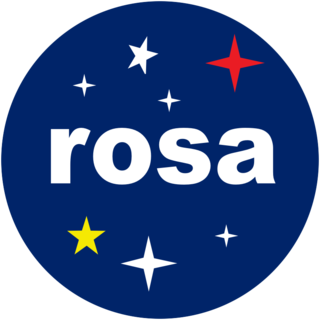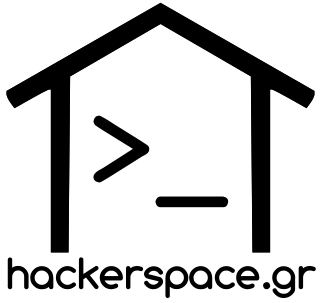Related Research Articles

The Defense Advanced Research Projects Agency (DARPA) is a research and development agency of the United States Department of Defense responsible for the development of emerging technologies for use by the military.
The People's Republic of China possesses a diversified communications system that links all parts of the country by Internet, telephone, telegraph, radio, and television. The country is served by an extensive system of automatic telephone exchanges connected by modern networks of fiber-optic cable, coaxial cable, microwave radio relay, and a domestic satellite system; cellular telephone service is widely available, expanding rapidly, and includes roaming service to foreign countries. Fiber to the x infrastructure has been expanded rapidly in recent years.
Turkmenistan has a state-controlled press and monitored communication systems. Turkmenistan's telecommunications services are considered to be the least developed of all the Commonwealth of Independent States (CIS) countries. Overall, the telecom market in this predominantly rural country is relatively small but has been trying boldly to expand in recent years. The state-owned Turkmen Telecom has been the primary provider of public telephone, email and internet services, and through a subsidiary has been operating a GSM mobile network in competition with a private mobile operator, BCTI.

The Defense Information Systems Agency (DISA), known as the Defense Communications Agency (DCA) until 1991, is a United States Department of Defense (DoD) combat support agency composed of military, federal civilians, and contractors. DISA provides information technology (IT) and communications support to the President, Vice President, Secretary of Defense, the military services, the combatant commands, and any individual or system contributing to the defense of the United States.

China has been on the internet intermittently since May 1989 and on a permanent basis since 20 April 1994, although with limited access. In 2008, China became the country with the largest population on the Internet and, as of 2022, has remained so. As of July 2016, 730,723,960 people were internet users.

KT Corporation, formerly Korea Telecom, is a South Korean telecommunications company. KT is the second-largest wireless carrier in South Korea, with 16.493 million subscribers as of Q4 2017.
ORBCOMM is an American company that offers industrial Internet of things (IoT) and machine to machine (M2M) communications hardware, software and services designed to track, monitor, and control fixed and mobile assets in markets including transportation, heavy equipment, maritime, oil and gas, utilities and government. The company provides hardware devices, modems, web applications, and data services delivered over multiple satellite and cellular networks.
Machine to machine (M2M) is direct communication between devices using any communications channel, including wired and wireless. Machine to machine communication can include industrial instrumentation, enabling a sensor or meter to communicate the information it records to application software that can use it. Such communication was originally accomplished by having a remote network of machines relay information back to a central hub for analysis, which would then be rerouted into a system like a personal computer.

A smart meter is an electronic device that records information such as consumption of electric energy, voltage levels, current, and power factor. Smart meters communicate the information to the consumer for greater clarity of consumption behavior, and electricity suppliers for system monitoring and customer billing. Smart meters typically record energy near real-time, and report regularly, short intervals throughout the day. Smart meters enable two-way communication between the meter and the central system. Such an advanced metering infrastructure (AMI) differs from automatic meter reading (AMR) in that it enables two-way communication between the meter and the supplier. Communications from the meter to the network may be wireless, or via fixed wired connections such as power line carrier (PLC). Wireless communication options in common use include cellular communications, Wi-Fi, wireless ad hoc networks over Wi-Fi, wireless mesh networks, low power long-range wireless (LoRa), Wize Zigbee, and Wi-SUN.

Viasat Inc. is an American communications company based in Carlsbad, California, with additional operations across the United States and worldwide. Viasat is a provider of high-speed satellite broadband services and secure networking systems covering military and commercial markets.

Copernicus is the Earth observation component of the European Union Space Programme, managed by the European Commission and implemented in partnership with the EU Member States, the European Space Agency (ESA), the European Organisation for the Exploitation of Meteorological Satellites (EUMETSAT), the European Centre for Medium-Range Weather Forecasts (ECMWF), the Joint Research Centre (JRC), the European Environment Agency (EEA), the European Maritime Safety Agency (EMSA), Frontex, SatCen and Mercator Océan.

The Romanian Space Agency is a public institution with extra-budgetary funding that coordinates Romania's national space technology research programs and space research-related activities. ROSA was founded in 1991 and is subordinated to the Ministry of Education.
The Transformational Satellite Communications System (TSAT) program was a United States Department of Defense (DOD) program sponsored by the U.S. Air Force for a secure, high-capacity global communications network serving the Department of Defense, NASA and the United States Intelligence Community (IC). It was intended as an enabler of net-centric warfare that would facilitate defense and intelligence professionals making rapid decisions based on integrated, comprehensive information. In 2003, the estimated project costs for the period up to 2015 were estimated to US$ 12 billion (inflation adjusted US$ 17.7 billion in 2021). In October 2008, the DoD announced that it was postponing making a decision on choosing a contractor to build the system until 2010. In April 2009 Secretary of Defence Robert M. Gates asked that the project be canceled in its entirety.

A hackerspace is a community-operated, often "not for profit", workspace where people with common interests, such as computers, machining, technology, science, digital art, or electronic art, can meet, socialize, and collaborate. Hackerspaces are comparable to other community-operated spaces with similar aims and mechanisms such as Fab Lab, men's sheds, and commercial "for-profit" companies.
TOG is a hackerspace in Dublin, Ireland. tóg is a word in the Irish language; one of its meanings is 'to build or construct'.
Internet censorship circumvention is the use of various methods and tools to bypass internet censorship.

Telecomix is a decentralized cluster of net activists, committed to the freedom of expression and is a name used by both WeRebuild and Telecomix. WeRebuild is a collaborative project used to propose and discuss laws as well as to collect information about politics and politicians. The Telecomix is the operative body that executes schemes and proposals presented by the WeRebuild. On September 15, 2011, Telecomix diverted all connections to the Syrian web, and redirected internauts to a page with instructions to bypass censorship.

Hackerspace.gr ('hsgr') is a hackerspace in Athens, Greece, established in 2011. It operates as a cultural center, computer laboratory and meeting place. Hackerspace.gr promotes creative coding and hardware hacking through its variety of activities. According to its website: "Hackerspace.gr is a physical space dedicated to creative code and hardware hacking, in Athens".

Svalbard Satellite Station or SvalSat is a satellite ground station located on Platåberget near Longyearbyen in Svalbard, Norway. Opened in 1997, it is operated by Kongsberg Satellite Services (KSAT), a joint venture between Kongsberg Defence & Aerospace and the Norwegian Space Centre (NSC). SvalSat and KSAT's Troll Satellite Station (TrollSat) in Antarctica are the only ground stations that can see a low altitude polar orbiting satellite on every revolution as the earth rotates. As of December 2019 the facility consists of almost 100 multi-mission and customer-dedicated antennas which operate in the C, L, S, X and K bands. The station provides ground services to more satellites than any other facility in the world.
shackspace is a Stuttgart hackerspace run by shack e.V., a non-profit association, established in 2009. Originally located in North Stuttgart, it moved to Stuttgart-Wangen in March 2011. It is among the largest and fastest-growing hackerspaces in Germany, with over 110 paying members. The mission of shackspace is to foster an environment where people can collaborate on ideas, share knowledge and talents, and explore aspects of life including science, technology, software development, arts and crafts and anything else members express an interest in. shackspace views itself as not only a physical workspace, but also a community of like-minded people.
References
- ↑ Meyer, David. "Hackers plan space satellites to combat censorship", BBC News , 30 December 2011. Retrieved on 3 January 2012.
- 1 2 Albanesius, Chloe. "Proposed Hacker Satellite System Would Fight Web Censorship", PC Mag , 1 January 2012. Retrieved on 3 January 2012.
- ↑ Hackerspace Global Grid "shackspace wiki: Hackerspace Global Grid" Archived 2012-01-04 at the Wayback Machine Retrieved on 3 January 2012.
- ↑ HGG:faqs What's that thing about "uncensorable internet" Archived 2012-01-08 at the Wayback Machine
- ↑ "Hackers Said to be Planning to Launch Own Satellites to Combat Censorship". PC World . 31 December 2011.